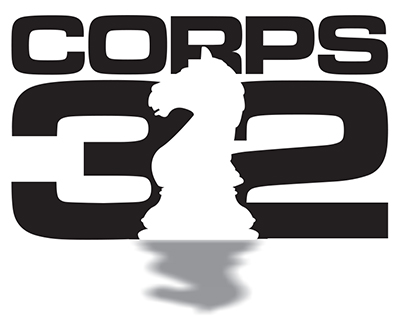It’s starting to get a little frustrating for both Jan Timman and Alexey Shirov. To every problem they create, their opponents find a solution. Today both had White and both obtained an advantage, but it turned out to be not enough. Two endgames came on the board that had a few similarities, and both were quite interesting for the connoisseurs. In both cases White won a pawn, but Black had a pawn that was flying around in the white position like an annoying gadfly. The resulting half point was not much help for either the Dutchman or the Latvian.
‘No, I can hardly feel satisfied’, Timman muttered, ‘because I think I missed a good chance today, on the 32nd move. I was tired, I hadn’t slept well after yesterday’s terrible loss.’
Timman - Jobava
1.d4 Nf6 2.c4 g6 3.Nc3 Bg7 4.e4 0–0 5.Bd3
The move that is also often played by Sokolov and Seirawan. Jobava now improvises:

5...Nc6
The idea is known, and it has been played by, among others, King’s Indian expert Eduard Gufeld and also Luke McShane. On 6.Nge2 Black wants to play 6...e5 and then after 7.d5 Nd4 8.Nxd4 exd4 9.Ne2 it becomes clear why Black has postponed ...d7-d6: here he has 9...c5! 10.dxc6 dxc6 with a good position, as commentator John van der Wiel explained. Timman of course knew this and played:
6.Nf3 d6 7.d5 Nb4 8.Be2 a5 9.0–0 Bg4!?
Slightly strange with the bishop on e2, as Timman doesn’t mind exchanging it:
10.Ng5!?
Van der Wiel thought that 10.Nd4 Bxe2 11.Ndxe2 was more natural.
10...Bxe2 11.Qxe2 c6 12.Be3 Qd7!?
Taking away a square from his knight, and sometimes Na4 is possible now. But it turns out that Black can afford to play like this.
13.h3 cxd5 14.exd5!
The pressure on e7 is worth more to Timman than the possible break with e4-e5.
14...a4 15.Rac1 Rfc8 16.Rfd1 Na6 17.Re1 Nc5
The consequence of putting the knight here is that the pawn on e7 may be lost in some lines. Black hopes to get active counterplay for it.
18.Rcd1 b6

19.Bxc5 bxc5
Jobava opts for counterchances along the b-file instead of holding onto the pawn with 19...Rxc5 20.b3 axb3 21.axb3.
20.Qxe7 h6 21.Qxd7 Nxd7 22.Nge4 a3

23.bxa3
Interesting is 23.b3!? f5 24.Nxd6 Bxc3 25.Nxc8 Rxc8 26.Re7 and the d-pawn may just give Black a hard time.
23...Bxc3 24.Nxc3 Ne5 25.Nb5 Nxc4 26.Re4!
26.Rc1 looks better, but after 26...Rcb8 27.Rxc4 Rxb5 28.Re7 Rb1+ 29.Kh2 Rd1 30.Rf4 f5 Black has solved most of his problems.
26...Rcb8 27.a4!

The point. White cannot very well take this pawn in view of 28.Nxd6.
27...Nb2 28.Rd2 Rxa4 29.Rxa4 Nxa4 30.Nxd6 Rb1+ 31.Kh2 Rb4

32.Nc8?
Timman called this the decisive mistake. Better was 32.a3! Rb8 33.Nc4 f6 34.Re2 Rd8 35.d6 and the white rook will have a field day.
32...Kf8 33.d6 Ke8 34.d7+ Kd8 35.Nd6!
Still his best chance. Possibly in his calculations Timman had hoped to win here with 35.Ne7, but then 35...Rb6 holds.
35...Kxd7 36.Nxf7+ Rd4

37.Rc2
With hindsight, Timman said that perhaps he should have tried the knight ending after 37.Rxd4+ cxd4 38.Kg3 Kc6 39.Kf3. This indeed looks good for White. In the pressroom, Oleg Romanishin produced the following line off-hand: 39...Kd5 40.Nxh6 Kc4 41.Ng4 Kc3 42.Ne5 Nc5 43.h4 Kc2 44.Kg4 (or 44.g4) 44...Nd7 and now 45.Nc6! wins.
37...Kc6 38.Nxh6 c4 39.Ng4 c3
Still it looks pretty dangerous with that c-pawn, but Timman was convinced: ‘White is always better here.’ It looks like there is no win anymore, though.
40.Ne3 Kc5 41.g4 Kb4 42.h4 Nb6 43.Rc1 Rd2 44.Kg3 Nc4 45.Nc2+ Kc5 46.Ne1
46.h5 gxh5 47.gxh5 might have given better winning chances.
46...Kb4 47.h5 gxh5 48.gxh5 Nd6 49.Nc2+ Kc4 50.Ne3+ Kd3

Now Timman had had enough of the gadfly on c3, and he steered towards the draw with...
51.f3 Kxe3 52.Rxc3+ Kd4 53.Ra3 ½–½
For Anish Giri, today was quite unlike the first two rounds. ‘Well, you don’t live in paradise everyday’, the youngster said.
Shirov - Giri
1.d4
After the failure in the opening game Shirov changes tack.
1...Nf6 2.c4 e6 3.Nf3 d5 4.Nc3 Bb4 5.Bg5 h6 6.Bxf6 Qxf6 7.e3 0–0 8.Qb3 c5 9.cxd5 exd5 10.a3
10.Qxd5 Nc6 followed by 11...Rd8 is not exactly Shirov’s style.
10...Bxc3+ 11.Qxc3 Nd7

12.Be2
Here Van der Wiel proposed the plan 12.Rc1 and if 12…b6 13.Bb5. Now Black is pretty much obliged to play 13...c4, but that doesn’t seem such a bad thing: after 14.b3 a6 15.Bxd7 Bxd7 it wouldn’t be wise to win a pawn on c4.
12...b6 13.0–0 Bb7 14.Rac1 c4 15.Nd2 b5 16.Bf3
16.f3 would be too slow now on account of 16...Rfe8.
16...Qe7
Keeping an eye on a3 and keeping the positional threat of ...a7-a5 in the position. But with hindsight, Giri wasn’t happy about this move.
17.Qa5 Bc6 18.b3 Qd6 19.bxc4 bxc4 20.Nb1
A Karpovian manoeuvre with which White increases the pressure on d5.
20...Rab8 21.Nc3 Rb3
There doesn’t seem to be anything wrong with 21...Nf6, because taking on a7 remains unattractive. Giri opts for more activity.
22.Nxd5

22...Rxa3
Even after the game Giri wasn’t sure about 22...Rb5!? 23.Qa4 (after 23.Qa6 Black can take on d5 with the rook as well, but he also has the alternative 23...Nb8!?) 23...Rxd5 24.Qxc4 Ba8 25.Bxd5 Bxd5. ‘For the “small exchange” White has two strong centre pawns, this is hard to assess. On the other hand, the endgame was also very dangerous for me.’
23.Qc7
23.Qb4 Qxb4 24.Nxb4 Bxf3 25.gxf3 and perhaps the white knight is a little better positioned than in the game.
23...Qxc7 24.Nxc7 Bxf3 25.gxf3 Nb6 26.Nb5
26.Ra1 Rxa1 27.Rxa1 Rc8 is risky, but White still has 28.Na6.
26...Rb3

27.Nxa7
The computer gives the extremely hard-to-find 27.Nd6!? c3 28.Rb1 Rxb1 29.Rxb1, holding off the black rook, whereas on ...Td8 White can go after the c-pawn immediately with Nb5. But here White still has to deal with the a-pawn as well.
27...c3
27...Ra8! 28.Nc6 c3 29.e4 (29.Rb1? Rb2!) 29...Ra2 and Black doubles on the second rank, with enough counterplay for the draw. ‘During the game I thought this didn’t work’, said Giri.
28.Rb1! Rxb1 29.Rxb1 Nd5 30.Kf1 c2
A little subtler may have been first 30...Ra8 31.Nb5 Ra5.
31.Rc1 Nb4 32.Ke2 Rb8 33.d5! Nxd5
Certainly not 33...Rd8? 34.Nc6!.
34.Rxc2 Ne7 35.f4 Rb7
Giri: ‘His knight is bad over there, and the rook ending is completely drawn.’
36.Nc6 Nxc6 37.Rxc6 g6 38.f5 gxf5 39.Rxh6 Rb4

The doubled f-pawn defends everything, so Black only has to keep the h-pawn in control. Shirov kept trying until move 61, but the draw was inevitable.

 .
. 






















